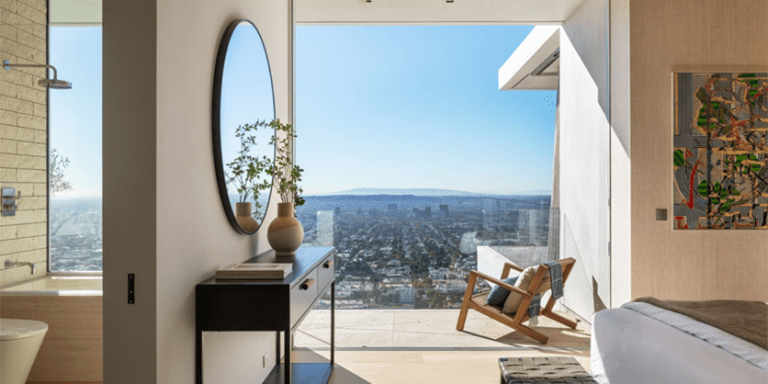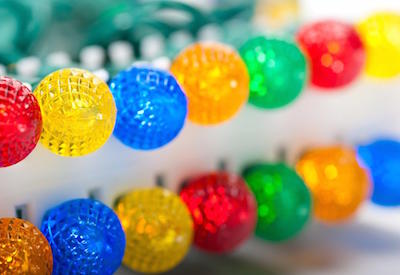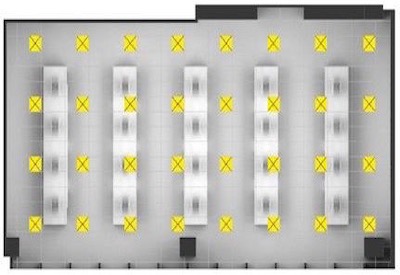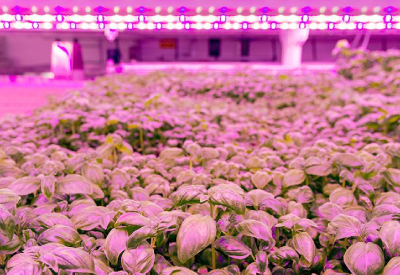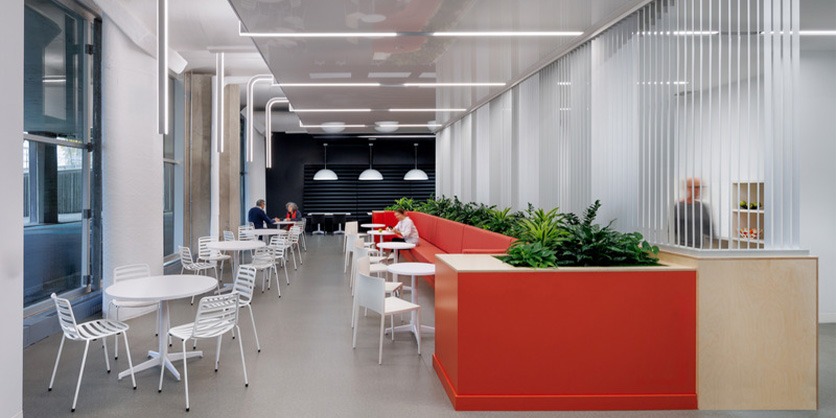Light and Technology in a New Language — LFI 2016
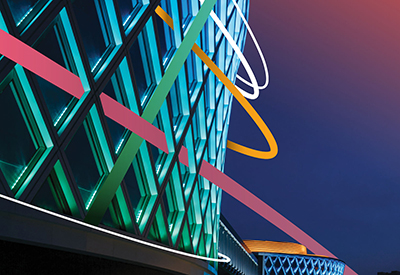
Line Goyette
This was the theme for Lightfair International 2016, taking place in San Diego from April 24 to 28. At another time we would have talked about technological convergence. With six huge pavilions of products and 200 hours of continuing education courses, the 2016 conference presented a comprehensive curriculum of lighting and design education featuring top thought-leaders with 83 course offerings.
New this year, a one-day IoT and Smart Lighting Forum, a Light and Health track, three days of 60-minute sessions, and a 90-minute off-site tour of the historic San Diego Trolley Station. Everywhere people were talking about the future of lighting.
There’s really no room at this event for worst in class, where each new product is more intelligent than the last. In fact, I encountered a lot of prototypes this year. LED technology is now well entrenched, so industry focus is shifting to language — lighting solutions that combine different technologies, and wireless solutions using different protocols. Also, new uses of existing technologies (e.g., DC current).
We heard about new solutions to challenges created by LED technology (reflections, effects of flicker, new colour renderings). Panning and zooming technologies were well represented, along with commercial lighting street lighting. We were also had a choice of real and virtual tours of updated and reissued lighting.
In short, the industry is evaluating the transition to the DEL, adjusting the technology, broadening its scope and applications, and refining the design of its lighting into often true works of art. In a future issue we will present several products launched on site. Here is a list of the most innovative products and designs introduced during the last 12 months, which received the BIA Innovations Awards on April 26.
LFI Innovations Awards
The eighth annual Next Generation Luminaires (NGL) Solid-State Lighting (SSL) Design Competition recognized 25 commercial LED indoor and outdoor lighting products for excellence. Sponsored by the U.S. Department of Energy (DOE), the Illuminating Engineering Society, and the International Association of Lighting Designers, NGL was launched in 2008 to encourage technical innovation and promote excellence in the design of energy-efficient LED luminaires for commercial, industrial, and institutional applications.
A number of improvements were observed in the 2016 NGL entries. For example, efficacy for all submitted products was consistently higher than in previous years, although efficacies of Recognized indoor products were roughly the same as in 2015. About four-fifths of all submitted products had lumen maintenance greater than 85% (L85) at 50,000 hours. And for the first time, a significant number of awarded indoor products (31%) had a colour rendering index (CRI) > 90.
The idea behind NGL is to make it easier to find the best specification-grade LED lighting products. This means recognized products have to measure up on many fronts. The 2016 NGL entries were evaluated by a panel of judges (11 for indoor, 10 for outdoor) drawn from the architectural and outdoor lighting communities, and were scored on colour, illuminance, glare control, light distribution, serviceability, value, dimming control, and appearance — with lumen maintenance and luminous efficacy ratings based on LM79, LM80, and TM21 submitted to DOE’s LED Lighting Facts program by the manufacturers.
Submissions making it to the judging phase presented market-ready samples and complete documentation,including:
• luminaire and component specification sheets
• LM-79 test reports
• lumen maintenance projections
• warranty statements
• marketing materials
These documents help make sure actual performance matches the claims.
As LED technology and product design have evolved, NGL requirements have become increasingly demanding. “The NGL bar is set high, and the tires get kicked often and hard,” said DOE SSL Program Manager Jim Brodrick. “So when the judges award a product, you know it was well earned.”
NGL continues to focus on key applications where product quality or availability clearly lags market opportunity. This permits more in-depth and rigorous evaluation, rather than spreading effort over many well-established luminaire categories. Reflecting this focus, two new categories were judged for the first time in 2016: connected lighting (indoor) and sports lighting (outdoor). Altogether, the 2016 NGL indoor and outdoor competitions recognized a total of 25 luminaires out of 93 judged entries, with 5 of the 25 highlighted as Outstanding.
For indoor products, the 2016 target areas included luminaires with high lumen-output capabilities, as well as several aspects of controllability:
• simple digital dimming (required of all entrants)
• dim-to-warm
• tunable white
• connected systems of luminaires, sensors, and controls
The sharpened focus resulted in the evaluation of 62 indoor luminaires, 16 of which were recognized across just 8 categories, with 3 of those products singled out as Outstanding.
The Outstanding winners in the Indoor competition came from three manufacturers: Focal Point’s Nera linear pendant, Eaton’s Portfolio dim-to-warm downlight, and Kenall Lighting’s white-tunable MedMaster Balance.
Among the other recognized indoor winners,
• Visa Lighting, Selux Corporation, and LED Linear GmbH, for their decorative pendant luminaires
• Philips Ledalite, for two of its linear pendant luminaires
• Selux Corporation, Acuity Brands Lighting Inc., and Acuity’s Juno Lighting Group, for their white-tunable luminaires
• Meteor Lighting, for its high-output downlight.
• Juno Lighting Group, for its recessed accent light
• LF Illumination and LumenWerx, for their cove lights
• QuarkStar, in collaboration with Everlight, for a wall wash luminaire
Connected lighting systems, which integrate luminaires, sensors, and software to monitor and control operation, received special emphasis in the 2016 indoor competition, a first for NGL. Two basic types of connected lighting systems were submitted: those with an external controller and networked luminaires, represented by EnLighted’s Lighting Control Solution, and those with self-contained network controls integrated into the luminaires, represented by Cree’s SmartCast Technology and Philips’ SpaceWise Technology. The judges did not find any single connected-lighting entry to be generally superior, but rather noted that each has benefits and limitations in different applications.
For outdoor products, the target areas included pedestrian-scale luminaires, garage luminaires, and typical roadway, parking-lot, and wall-pack categories. Integrated sensors were evaluated for the garage luminaires, while simple dimming control was required for most other categories. Of the 31 products making it past the prescreening process in the outdoor competition, 9 were recognized across just 4 categories, with 2 of those products considered Outstanding.
The Outstanding winners in the outdoor competition included Landscape Forms, Inc.’s FGP Path Light bollard and Cree’s RSW Series LED Street Luminaire.
Among the other recognized outdoor winners,
• First Light Technologies and Selux Corporation, for their bollards,
• Landscape Forms Inc. and Eaton, for their pedestrian-scale post-top luminaires
• Kenall Lighting, RAB Lighting Inc., and Philips Gardco, for their parking garage luminaires
The 2016 outdoor competition included sports lighting for the first time. While significant advances have been made in LED sports-lighting equipment for large arena and stadium applications, there remains a need for high-quality, affordable lighting to meet the demands of smaller exterior installations, such as high school and recreation fields, where lower mounting heights call for improved glare management, and light scatter beyond property boundaries can be an issue. The two NGL sports luminaires evaluated — Eaton’s Ephesus Lighting Stadium Pro and KMV’s SUFA-A Sports Luminaire — were considered Notable but were not recognized as fully appropriate for recreational applications.
Through a rigorous evaluation process and detailed feedback from expert judges, the Next Generation Luminaires competition encourages and recognizes exceptional performance and quality in LEDs for general-illumination lighting. For more information on this year’s NGL winners, including photos, visit www.ngldc.org.
Line Goyette is Managing Editor of LDS.


